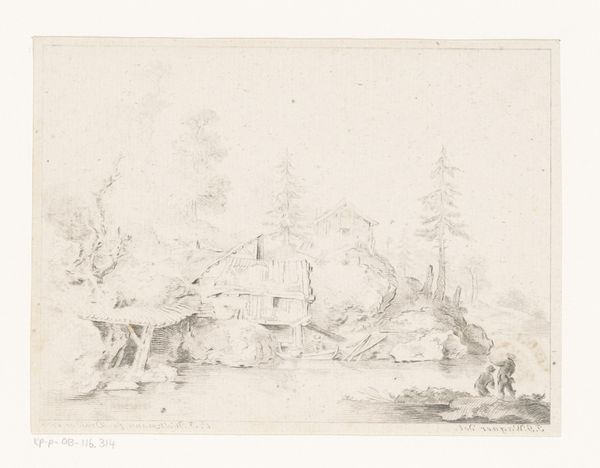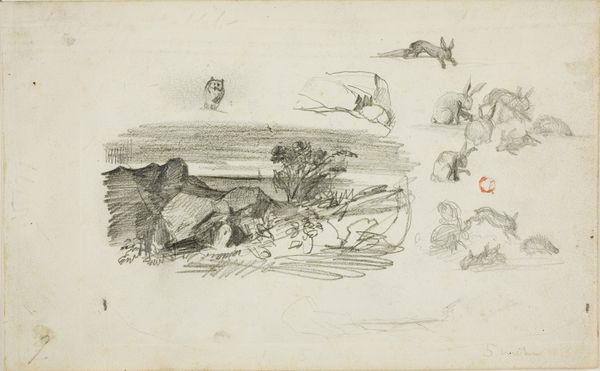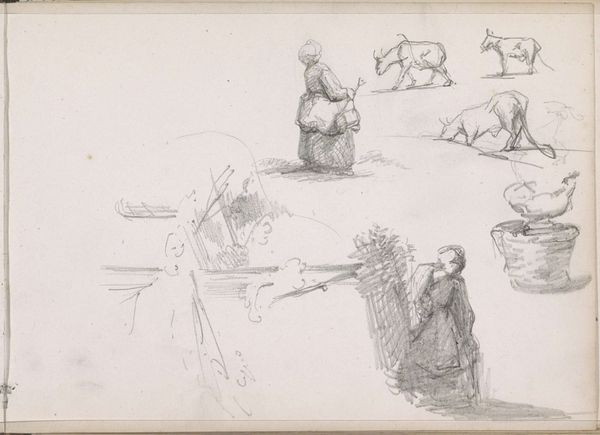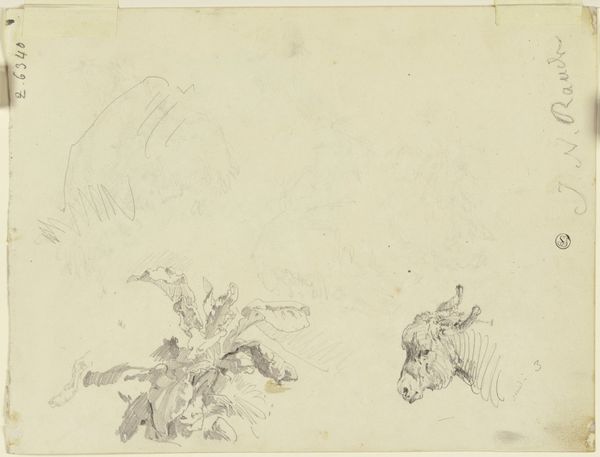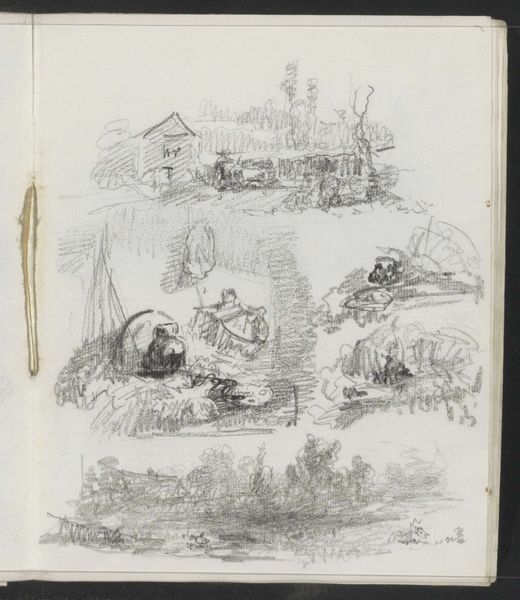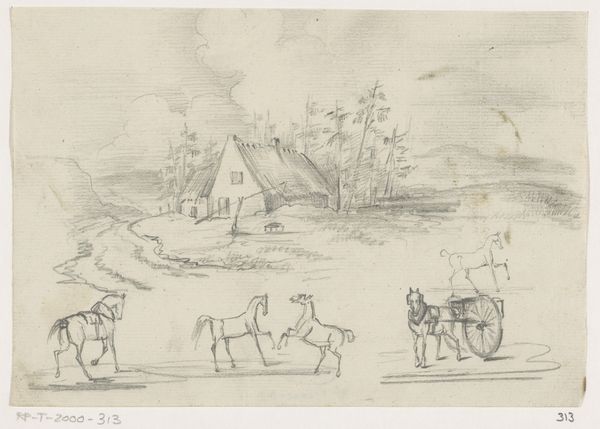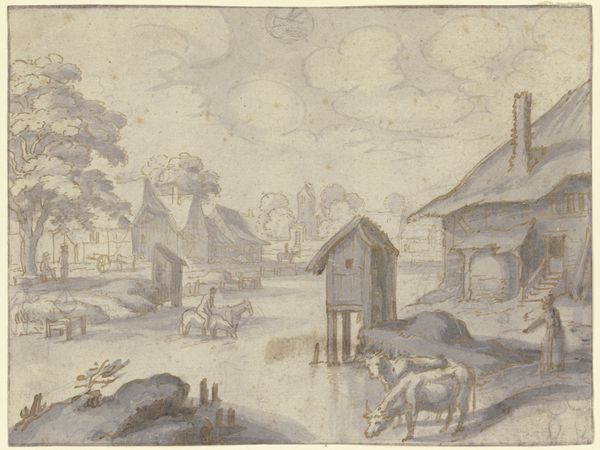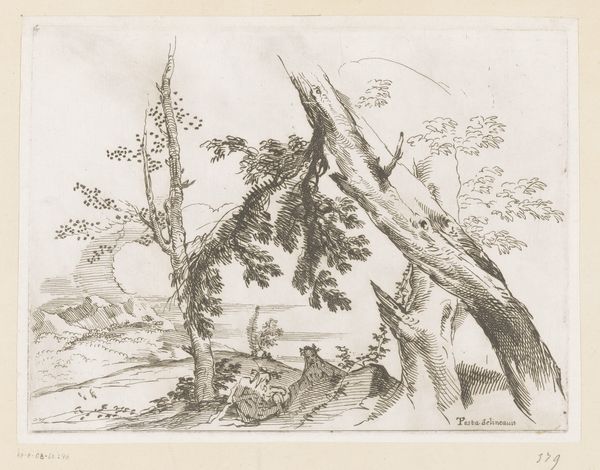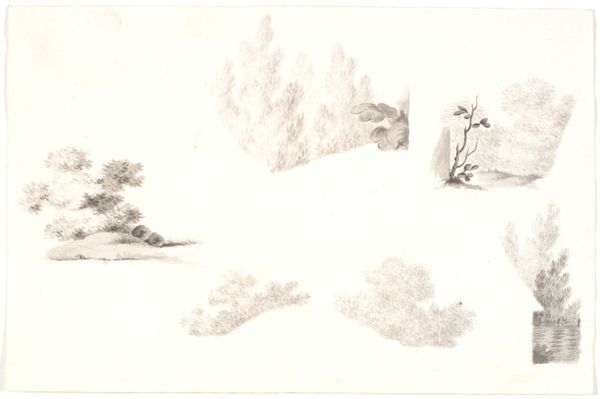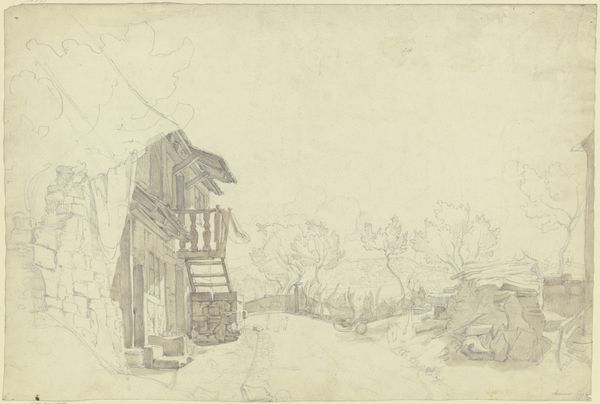
drawing, paper, pencil
#
portrait
#
drawing
#
dog
#
landscape
#
paper
#
pencil
#
horse
#
genre-painting
#
realism
Dimensions: height 205 mm, width 314 mm
Copyright: Rijks Museum: Open Domain
Curator: Welcome! Today we're looking at a sheet of studies by Floris Verster, dating to around 1875. It's currently held at the Rijksmuseum and rendered in pencil on paper, featuring an array of animals, figures, and architectural details. Editor: It strikes me as a very personal piece. The soft pencil lines give it an intimate, almost dreamlike quality, like sketches from a beloved diary. There’s a tranquility in the depictions of these resting animals that really resonates. Curator: Absolutely. Verster’s background and the context of art education in the late 19th century shed light on the work. These types of academic figure and animal studies were standard practice. They helped artists hone their skills of observation and rendering of form, essential training for realist painters at the time. The presence of the gate hints at his later interest in landscape painting. Editor: It’s interesting how these studies also inadvertently capture the rural hierarchies of labor and life. Animals, humans, and architecture – they are all interconnected here. I wonder how class dynamics of that era affected Floris’ representations? Curator: That's an insightful point. The lack of clear social critique places Verster more firmly within the Realist tradition than within social commentary of the time, but that doesn’t invalidate a politically grounded reading of the piece. His choice to represent these pastoral subjects reflected an increasing urbanization and longing for rural ideals that emerged in 19th-century Holland. The detailed architectural study might point towards colonial themes and concerns regarding possession and imperialism, because of the association with trade. Editor: Looking closer at the women figures, are they placed there for compositional purposes only? The way they're depicted lacks individual personality – were these quick studies intended for larger genre pieces, maybe echoing the era's problematic relationship with representations of women in both art and society? Curator: That is hard to say for certain, but I agree with the possibilities you’ve just raised. However, looking beyond subject matters is imperative to properly understand and assess its role within Realism as it gained prominence and evolved as a mainstream school of art. Editor: Perhaps. For me, though, its real power lies in the immediacy of the sketch, and what it indirectly reveals about labor relations and 19th-century mindsets concerning man, beast and property. It has encouraged us to question the systems of values and ways of seeing which operated when Verster was creating this sheet of studies. Curator: An artwork is always a document of its time! Editor: I’ll second that!
Comments
No comments
Be the first to comment and join the conversation on the ultimate creative platform.

